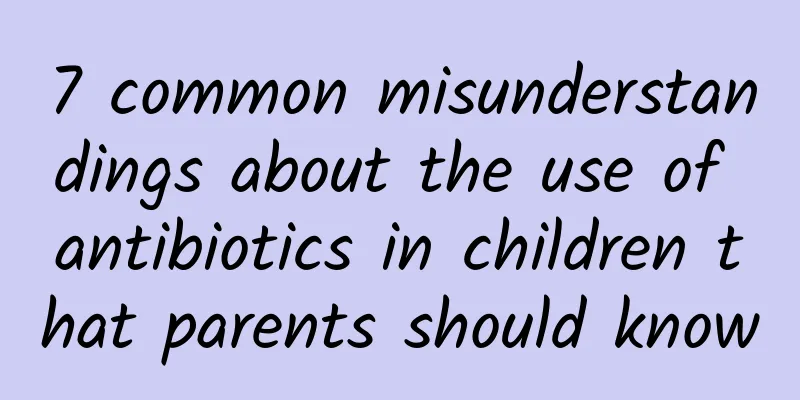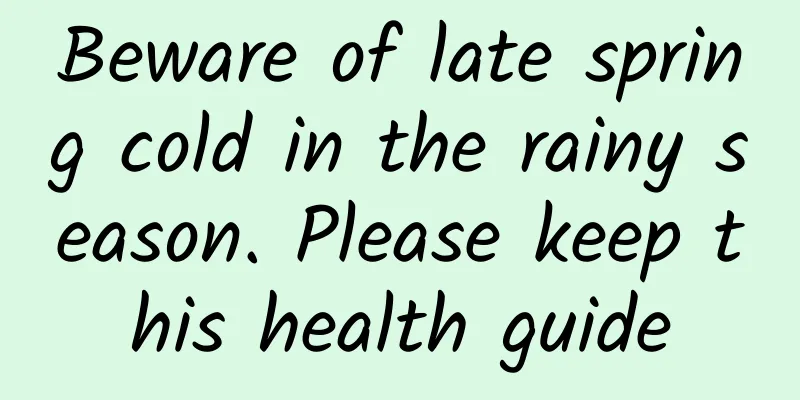7 common misunderstandings about the use of antibiotics in children that parents should know

|
Research analysis shows that from 2004 to 2015, the average antibiotic use rate for children in my country was 58.37%, which is lower than the average antibiotic use rate of 84.50% for children from 1993 to 2005 described in relevant literature, but still higher than the national requirement of less than 50%. The use rate of antibiotics in hospitals in developed countries such as Europe and the United States is 22% to 25%, which is a big gap compared with this. The development of new antibiotics is far behind the speed of bacterial resistance. In order to prevent our next generation from being in the "post-antibiotic era", the country has formulated relevant policies to guide the rational use of antibiotics. As the executors of the use of antibiotics - parents, you need to understand several important knowledge points and misunderstandings in the use of antibiotics. 1. What are antibiotics? Antibiotics generally refer to a class of substances or derivatives produced by bacteria, fungi or other microorganisms during their reproduction process that can kill or inhibit other microorganisms. They are used to treat infections caused by sensitive pathogenic microorganisms (usually bacteria or fungi). 2. The harm of antibiotic abuse 1. Ototoxicity hazards Previously, due to insufficient research on the ototoxicity of some antibiotics, the number of children under the age of 7 who suffered deafness due to irrational use of antibiotics reached 300,000, accounting for 30% to 40% of the total number of deaf-mute children, of which 60% to 80% were related to the irrational use of aminoglycoside antibiotics (streptomycin, neomycin, kanamycin, gentamicin, etc.). 2. Harm to organs such as liver and kidney Liver damage caused by antibiotics accounts for about 24% to 26% of adverse drug reactions. The main clinical manifestations are liver cell damage such as degeneration and necrosis. Children's kidney filtration and reabsorption functions are gradually developing, so the kidneys are most susceptible to damage during the excretion of antibiotic prototypes or metabolites. In severe cases, acute or chronic renal failure may occur. 3. Misuse of antibiotics can cause bacteria to develop drug resistance Under the continuous action of antibiotics, pathogenic microorganisms may continue to evolve in order to survive, using different ways to develop resistance to antibiotics, so as to survive in the antibiotic environment. As a result, ordinary antibiotics will lose their effectiveness when encountering infections, and more powerful antibiotics will have to be used. This will undoubtedly create a vicious cycle, and the final result is that when facing more resistant pathogenic microorganisms, there are no more effective antibiotics to inhibit and kill them. 4. Misuse of antibiotics may lead to secondary infection Among the side effects of antibiotics, one thing that must be noted is that even if the right medicine is used, if it is used improperly, the balance of the body's flora will be disrupted, causing the patient's condition to worsen and even leading to secondary infection. 3. Misunderstandings about the Use of Antibiotics Myth 1. All infections require antibiotics Due to the lack of effective publicity and education, the public may have misunderstandings about antibiotics, believing that all infections require antibiotic treatment. In fact, it is not necessary to use antibiotics for self-limiting diseases such as viral infections. The elimination of patients' symptoms may be related to the accidental nature of treatment. Sometimes, the blind use of antibiotics by "long-term illness makes a good doctor" has further contributed to the abuse of antibiotics. Myth 2: “Drip injection” is faster and more effective Parents generally believe that intravenous infusion is more effective than oral administration. Although intravenous administration can quickly reach effective blood drug concentrations, it also has potential risks of infection and is prone to adverse reactions. Oral administration is convenient and easy to perform, and can achieve the same effect as intravenous infusion when treating non-acute and severe diseases. Myth 3: Parents take medication on their own Many families have antibiotics, which is the basis for parents to use antibiotics irrationally on children. In general, hospitals need to conduct drug sensitivity tests on patients and select appropriate drugs based on the individual conditions of the children, and formulate corresponding dosing plans, including dosage, frequency, route and course of treatment. When parents use drugs on their own, they often rely on their own experience, and there are phenomena of combined use of drugs and too short a course of treatment. Myth 4: Not taking enough medication Due to the therapeutic properties of penicillins and cephalosporins, they generally need to be taken 2 to 3 times a day to achieve the best therapeutic effect. However, in actual applications, the once-a-day usage often leads to a single dose that is too large, which fails to reach an effective blood drug concentration and is also prone to drug resistance. For example, when children use mezlocillin sodium to treat infections, it should be intravenously dripped once every 6 to 8 hours. However, in clinical applications, the once-a-day dosing regimen is not uncommon. A survey shows that more than 75% of children do not use antibiotics at the required dose and course of treatment. Myth 5: The more medications you use, the better the effect Some parents believe that it is best to use multiple antibiotics at the same time when the baby is sick, so as to prevent bacteria from escaping the net. In fact, this is not the case. There is no clear clinical indication for treatment. Unauthorized use of multiple antibiotics may not enhance the treatment effect, but increase the risk of adverse drug reactions. Myth 6. “Be afraid of medicine like a tiger and stop taking it when it starts to work” It is true that medicines are toxic to some extent, but from the perspective of the pros and cons of treating diseases, the idea of "stopping the drug as soon as it works" is wrong. Antibiotics have their own course of use. If the remaining bacteria are not completely eliminated, "stopping the drug as soon as it works" can easily cause recurrence of infection and even promote the formation of drug-resistant bacteria. Myth 7. Children’s dose is half of the adult dose The growth and development of children is a continuous and gradual process. In this process, as they age, their body structure and physiological functions are in a continuous development period. Their pharmacological characteristics are significantly different from those of adults, so the dosage for children cannot be simply converted to half of the adult dosage. In order to ensure the safety and rationality of medication, medication should be selected based on the special characteristics of children's bodies and the pharmacokinetic and pharmacodynamic characteristics of the drug in the body. More than 70 years ago, humans invented and used penicillin. Since then, antibiotics represented by penicillin have played a vital role in saving patients and the wounded, and have made outstanding contributions to maintaining human health. The status of antibiotics in treating infections is unquestionable. Use them when necessary. Do not completely reject antibiotics because of fear of adverse drug reactions. I hope the public can look at the use of antibiotics for children rationally and avoid misunderstandings. Author: Liu Yanping Chen Ye Shanghai Pudong New Area People's Hospital |
<<: What is the six-item sex hormone test? Why do men also need to do it?
Recommend
How to relieve severe dysmenorrhea?
Dysmenorrhea is a very painful thing for most wom...
What is postmenopausal vaginal bleeding?
Once a woman experiences menopausal symptoms, her...
How many days are suitable for abortion?
Painless abortion after an unexpected pregnancy i...
What is the quickest way to treat female urinary tract infection?
In daily life, women are prone to urinary tract i...
The director has a hard case
Women's private parts generally need regular ...
Is it normal to have an outward-turned belly button during pregnancy?
Many women find that their belly buttons turn out...
Breast pain after three years of menopause
Women will have menstruation every month after en...
How is vulvar eczema caused?
Eczema is a common skin disease in clinical pract...
What are the causes of uterine prolapse?
What are the causes of uterine prolapse? Women ar...
If you have these symptoms, you may have hemorrhoids.
Hemorrhoids are a disease belonging to the anorec...
Can girls slim down their legs by riding a bicycle?
In fact, many girls are very curious: Can girls s...
Can pregnant women eat glutinous rice cakes?
We need to take good care of the diet of pregnant...
What "degrees" should chronic bronchitis patients pay attention to when it comes to their living environment and oxygen inhalation at home?
Author: Xi Jianing, Chief Physician, Beijing Reha...
Can a girl's body temperature cause infertility?
Many women suffer from body cold, which is a symp...
What can women eat to make their breasts bigger?
Summer is a season that women particularly like, ...









